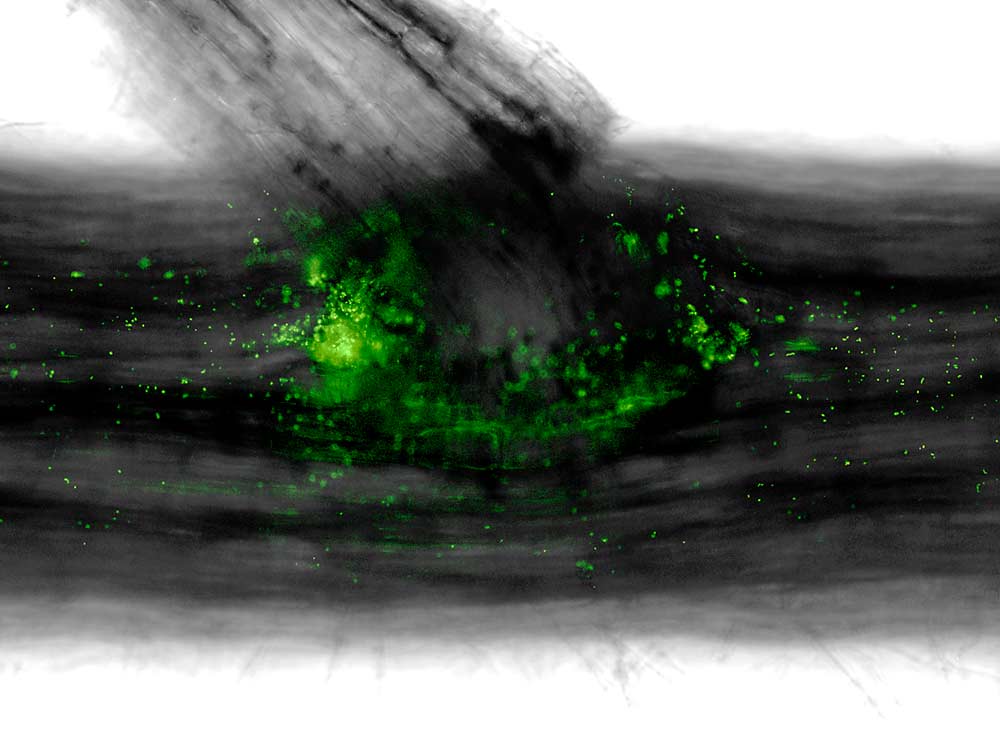
Along the rocky banks of the Snoqualmie River, willow and poplar trees grow on little but gravel and snowmelt.
The secret to their success in this low-nutrient habitat lies in nitrogen-fixing bacteria that live inside the tree tissue, trading their services for a share of the profits of photosynthesis. University of Washington professor Sharon Doty discovered these powerful symbionts nearly 20 years ago.

Now she, and a company that’s licensed the suite of microbes she cultured from willow and poplar tissue samples, say the same microbes will benefit a wide variety of crop plants, reducing fertilizer needs and boosting success under stressful conditions.
Learning more about the plant microbiome could have many such benefits for agriculture, said Ines Hanrahan, executive director of the Washington Tree Fruit Research Commission, who invited Doty to give a talk about her research to the commission in January.
“These pioneer plant species can colonize rocks and sand, so, we realized, plants that can survive here must have the best microbiome because they can survive in really harsh conditions,” Doty said. “These are microbes that can grow within the plant body that can fix nitrogen, so why not have them in crop plants?”
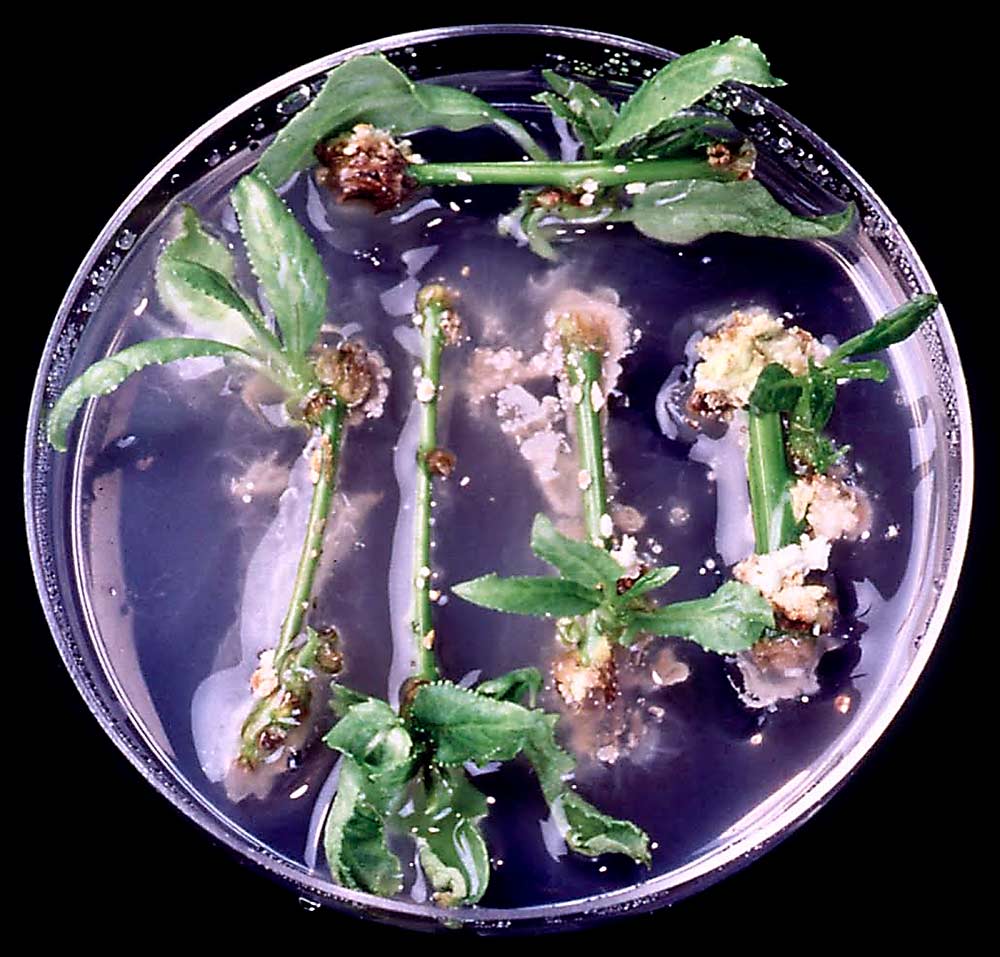
Fixing nitrogen where?
Generations ago, agronomists discovered that nitrogen-fixing bacteria lived in partnership with the roots of legume crops — which form special nodules to host the microbes — but widely believed that only legumes had such symbionts. Doty first proved otherwise when she identified the strain of bacteria that kept growing on supposedly sterile tissue cultures of poplar cuttings, but it took many years for her findings to be broadly accepted.
She went looking for the same bacteria in wild poplar samples and grew populations of the bacteria she found through plate culture, then inoculated other plants with the microbes to see if they conferred any benefit. They did.
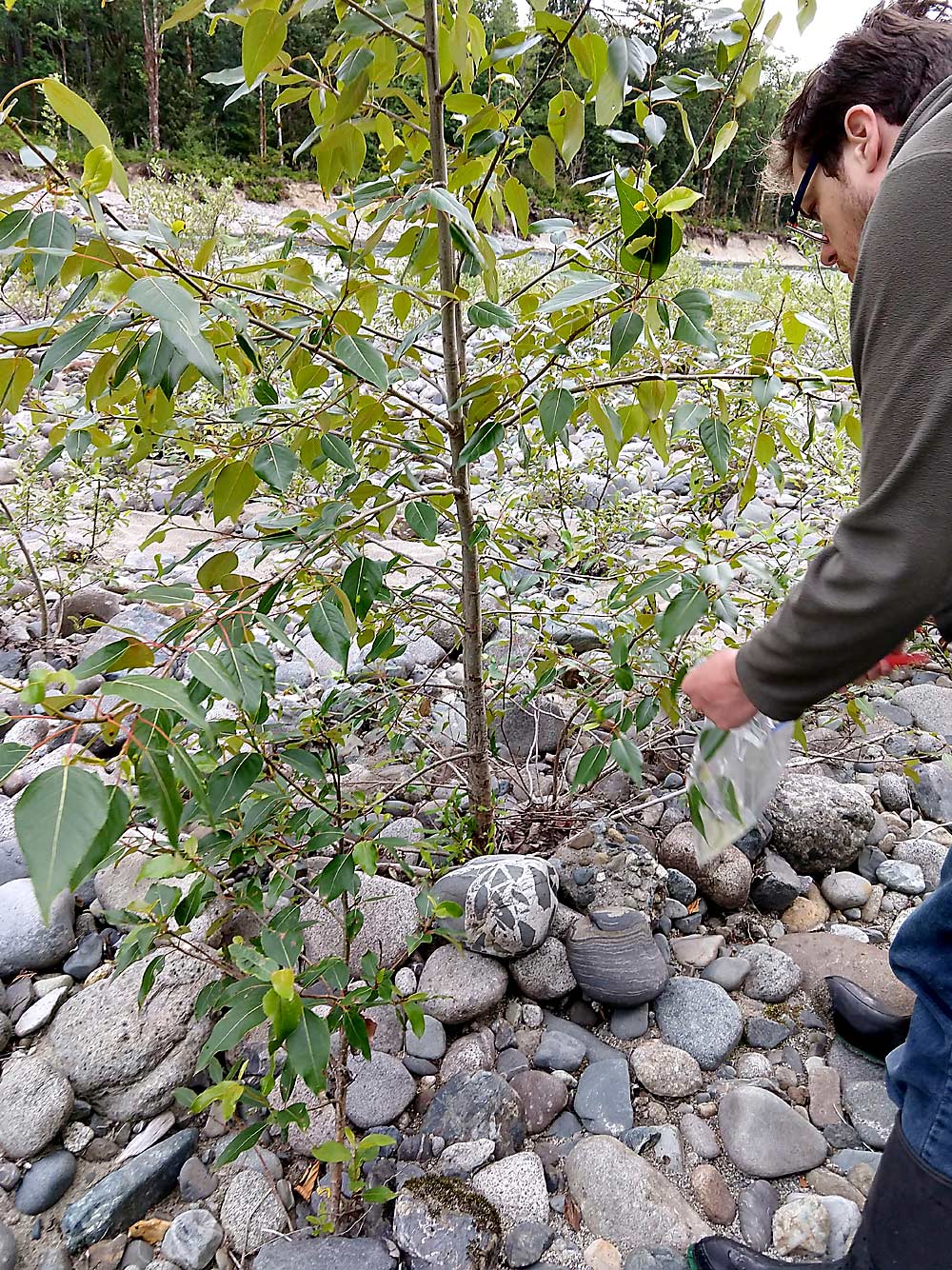
In greenhouse trials, peppers and tomatoes grown in nitrogen-limited conditions produced well when inoculated, compared to scraggly conventional counterparts. She saw significant boosts in growth in grasses, rice and Douglas fir trees. A small trial in Honeycrisp started by one of her undergraduate students suggests there might be fruit quality benefits, too, but Doty cautioned that it’s a very small and preliminary trial.
The chance find of these powerful microbes — called endophytes because they live inside the plant tissues — entirely shifted the course of Doty’s career. She’s found microbes that resist common plant pathogens and microbes that produce plant hormones that help fight stress.
It sounds far-fetched, but Doty explains that wild crop ancestors probably also had all sorts of beneficial microbial relationships that were just lost in commercial breeding. For example, nitrogen-fixing endophytes were recently found in wild maize in Mexico.
“It seems like we can tackle every problem a plant faces with bacteria,” Doty said. “It can help the plant get their nutrients and grow better and tolerate drought and heat stress and fight off pathogens and break down environmental pollutants; with the right partnership they can solve anything.”
Microbiome boom
The plant microbiome may be a new frontier in agriculture, Hanrahan said when introducing Doty to the commission.
Microbiologists divide the plant microbiome into three broad groups: the phyllosphere, on the stems, leaves, flowers and fruit; the rhizosphere, in the root zone; and the endosphere, inside the plant. Within each, there are opportunities for production benefits (think Blossom Protect) and challenges for commercial application.
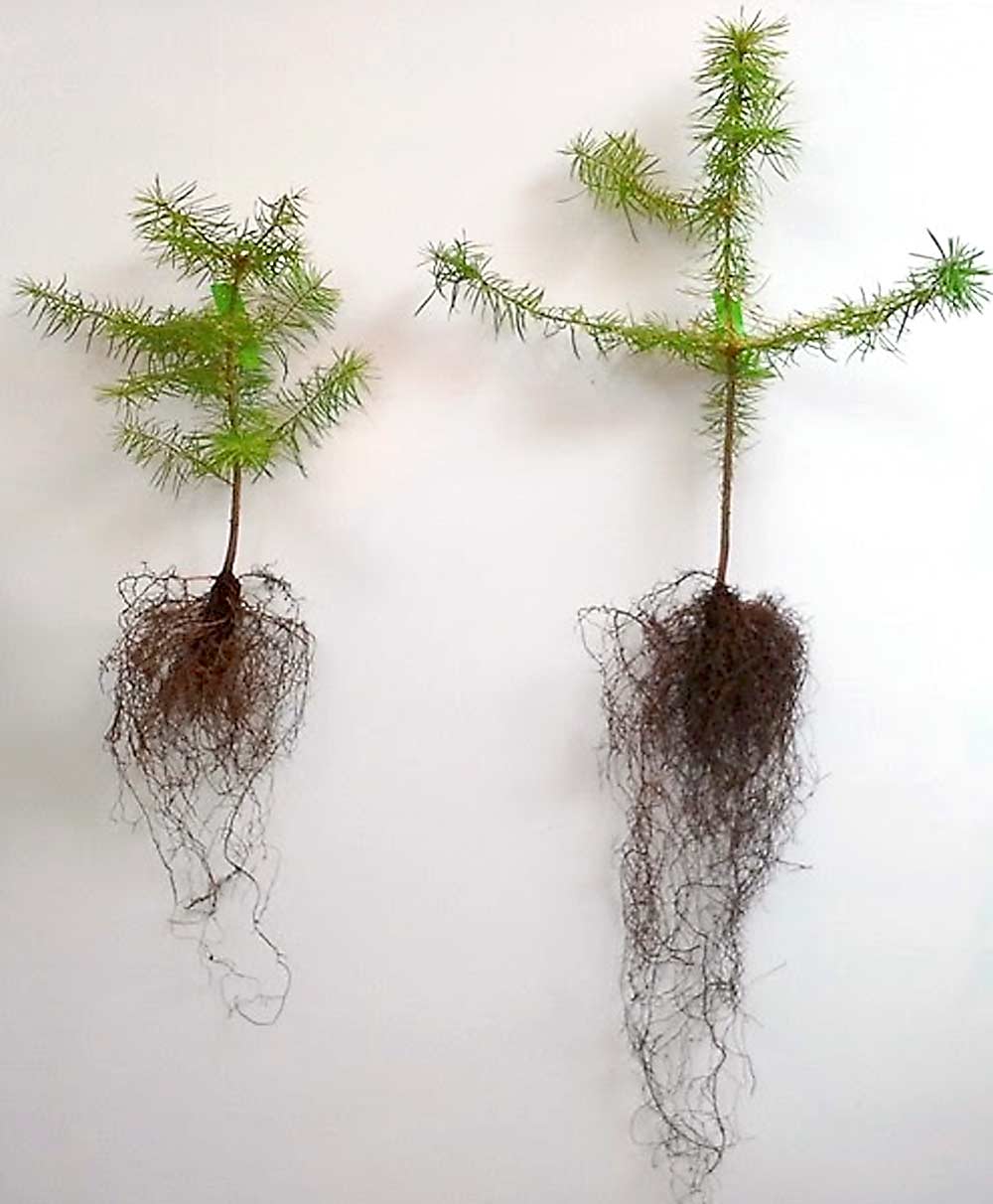
“It’s an exciting time to be in this field,” said U.S. Department of Agriculture microbiologist Mark Mazzola, who is based in Wenatchee, Washington. Advances in metagenomic sequencing now give scientists tools to study the complexity and functionality of microbial communities.
Recently, his work has focused, in part, on the relationship between apple rootstocks and the rhizosphere: Different rootstocks can cultivate different mycorrhizal fungi and very different microbial communities, some more disease-resistant than others. And that’s just comparing apples to apples.
“The metabolism that happens in the plant and the plant rhizosphere, it’s like looking at a human city and how interdependent we are,” he said. Because of that complexity, attempts over the years to use microbial inoculants to boost crop performance often fail to live up to the promise, he said. “Introducing a non-native organism into a very complex microbial community and expecting it to survive in competition with that community is very daunting.”
That’s why he’s more optimistic about environment-altering treatments such as anaerobic soil disinfection, in which farmers impose low-oxygen conditions that only certain microbes can survive and add a carbon source for those surviving microbes to feed on. That stress shifts the entire root zone microbial community onto a different ecological trajectory that seems more favorable for healthy crop growth over a long term. A project exploring the technique to replace fumigation is underway in apple orchards and is showing promising results, Mazzola said.
But when it comes to endophytes, there’s a lot less cutthroat competition inside of plants. That’s part of why her microbes have been shown to benefit so many plant species, Doty said. She also transfers a community of microbes — about a dozen species — that work well together.
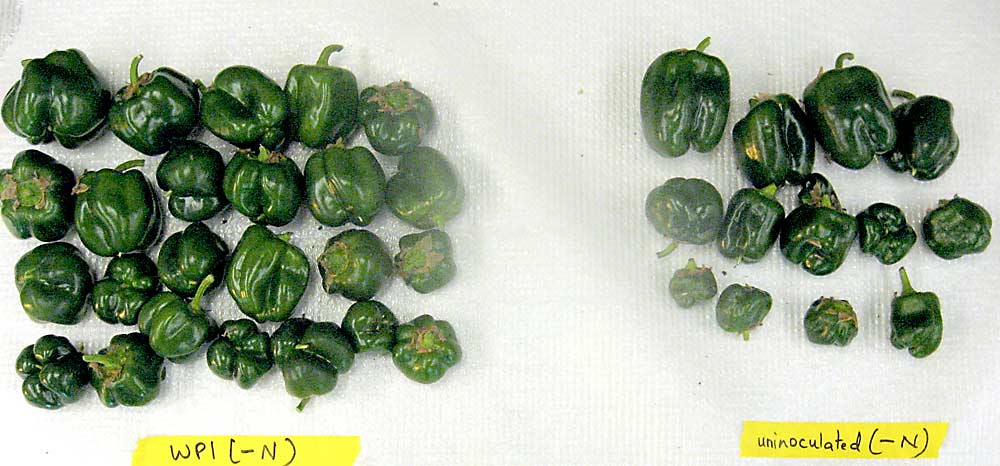
Commercial potential
Five years ago, a startup company licensed Doty’s nitrogen-fixing endophytes for agricultural commercialization. California-based Intrinsyx Technologies Corp. CEO Ahsan Ali said the company’s roots lie in space biology, working with plant stress physiologists on research that could someday help NASA grow food in space.
“If we go to the moon or Mars and we have to grow crops up there, we’re not going to be dragging bags of fertilizer,” Ali said. In fact, the microbes are part of an experiment — led by students — on the International Space Station experiment right now.
As for the terrestrial uses, the company has spent several years doing field trials in a variety of crop systems. Their first commercial launch will be this summer in the United Kingdom with a seed coating treatment on wheat, barley and canola that has been shown to boost yields for growers, even under full-fertilizer conditions.
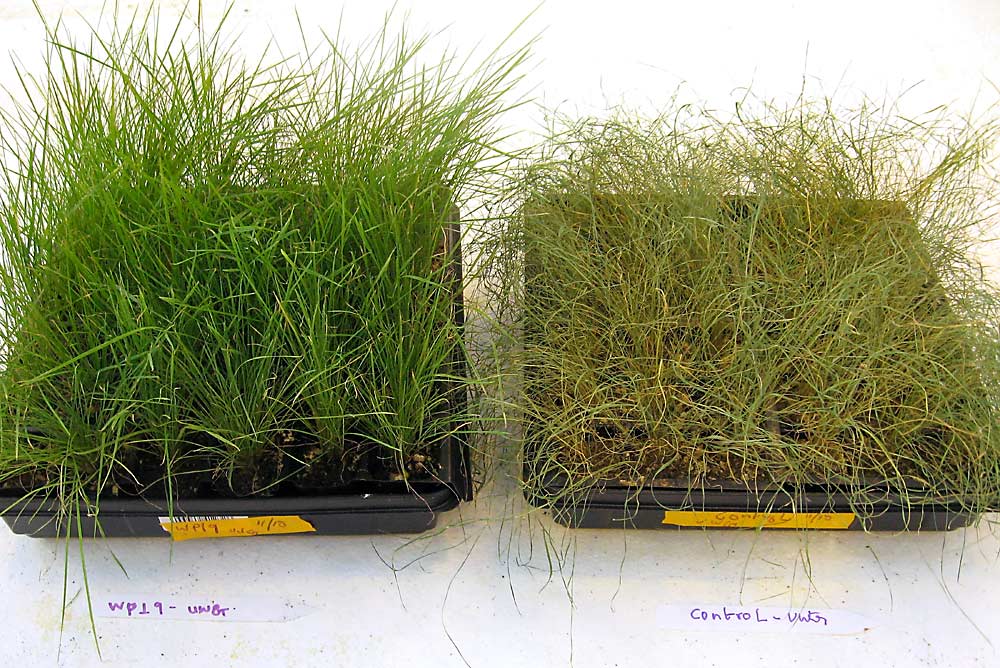
“Replacing synthetic fertilizer is not part of our messaging,” Ali said. But for organic growers or those facing regulatory pressure on nutrient management, he thinks the endophytes will help. “It’s an ongoing area of research (in different crops) but we believe they could reduce nitrogen use 20 to 30 percent and keep their yields consistent.”
In California, Intrinsyx is working with a nursery producer to run growth trials in fruit and nut crops, Ali said, but they don’t yet have yield or fruit quality data to share. He said they are looking to do their first apple production trial this year.
This spring, Doty received a grant from the Washington Tree Fruit Research Commission to see if any of her endophytes offer resistance to fire blight or rot pathogens, as one does for some Fusarium species, and she’s hoping to do more trials to explore the potential benefits of endophyte boosting in tree fruit crops in coming years.•
—by Kate Prengaman






Leave A Comment